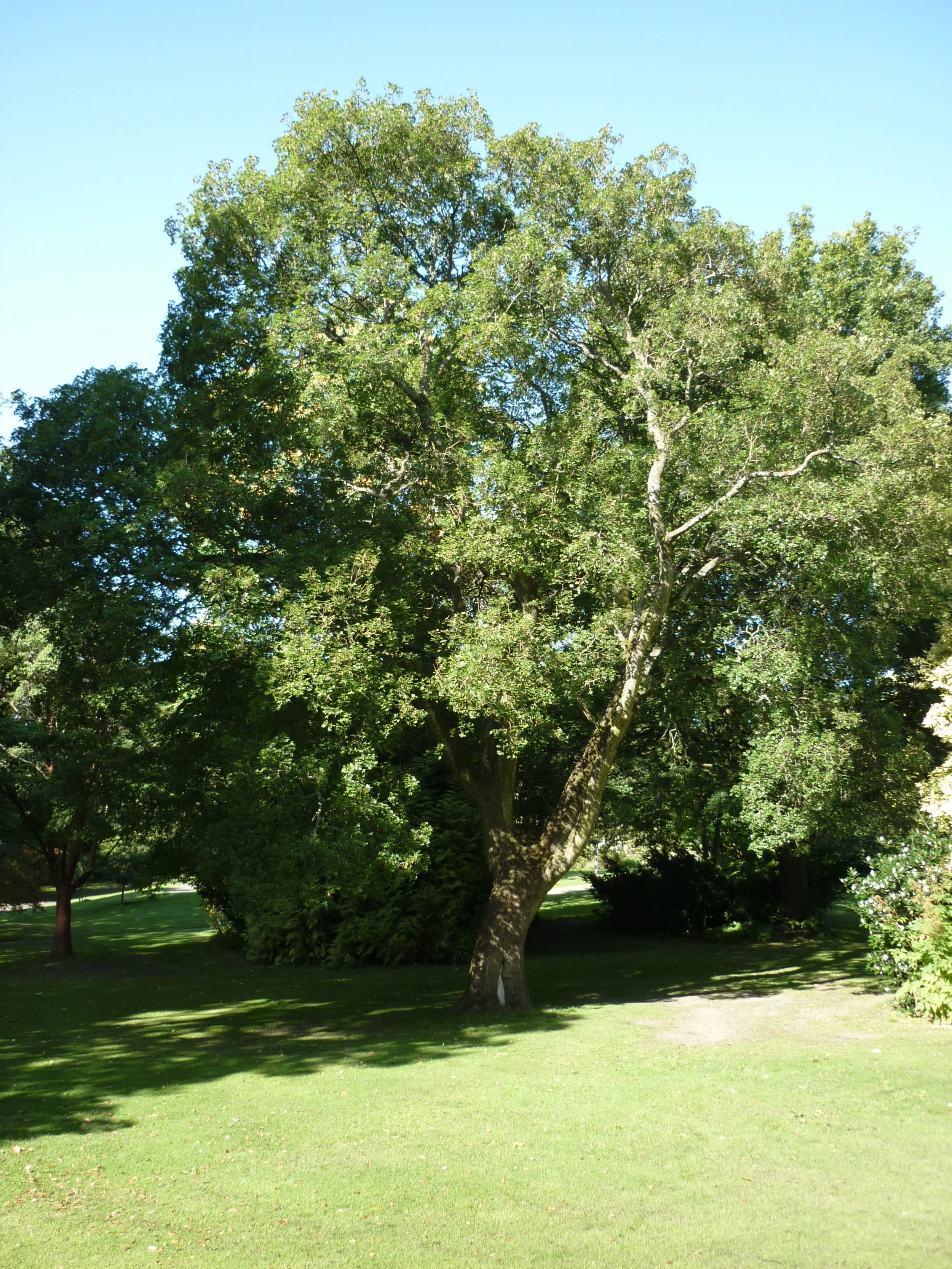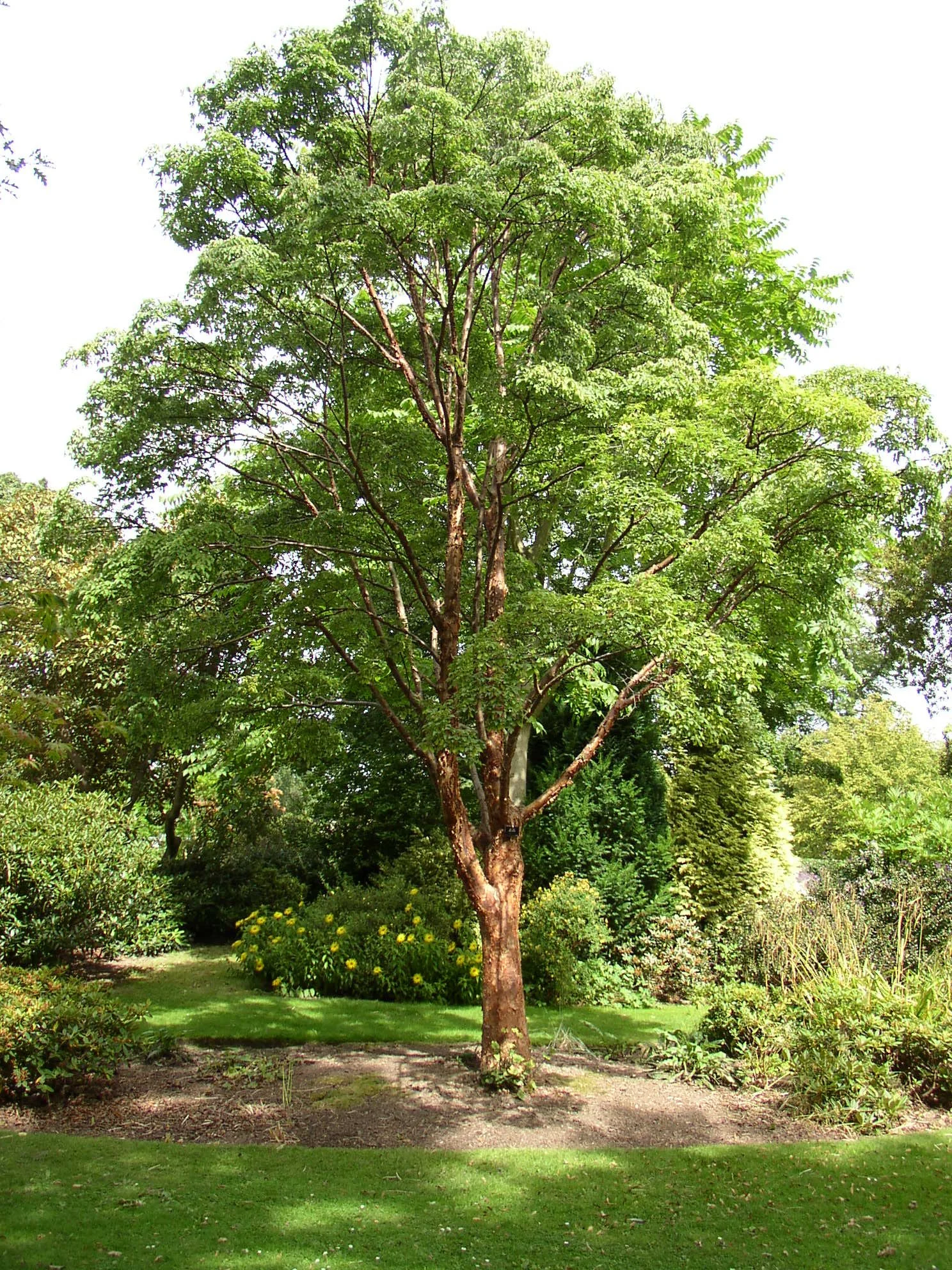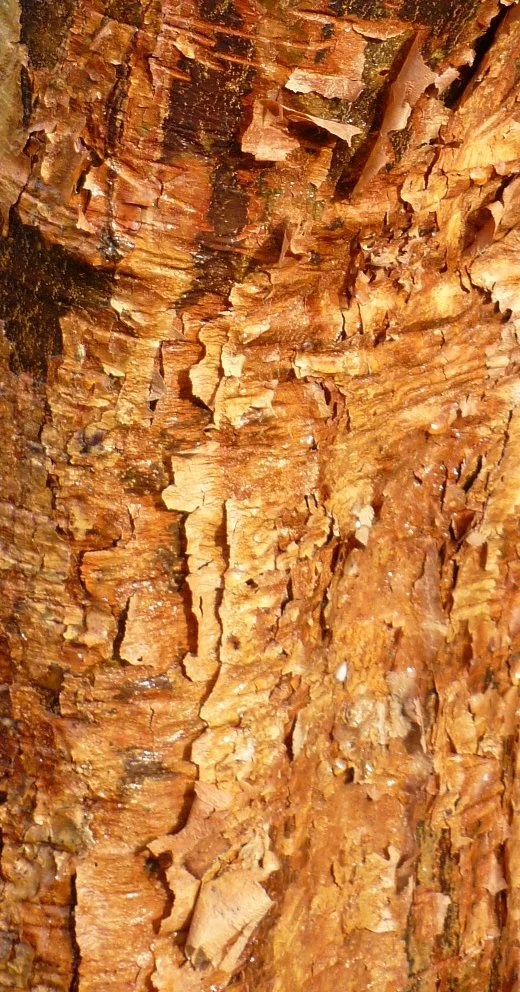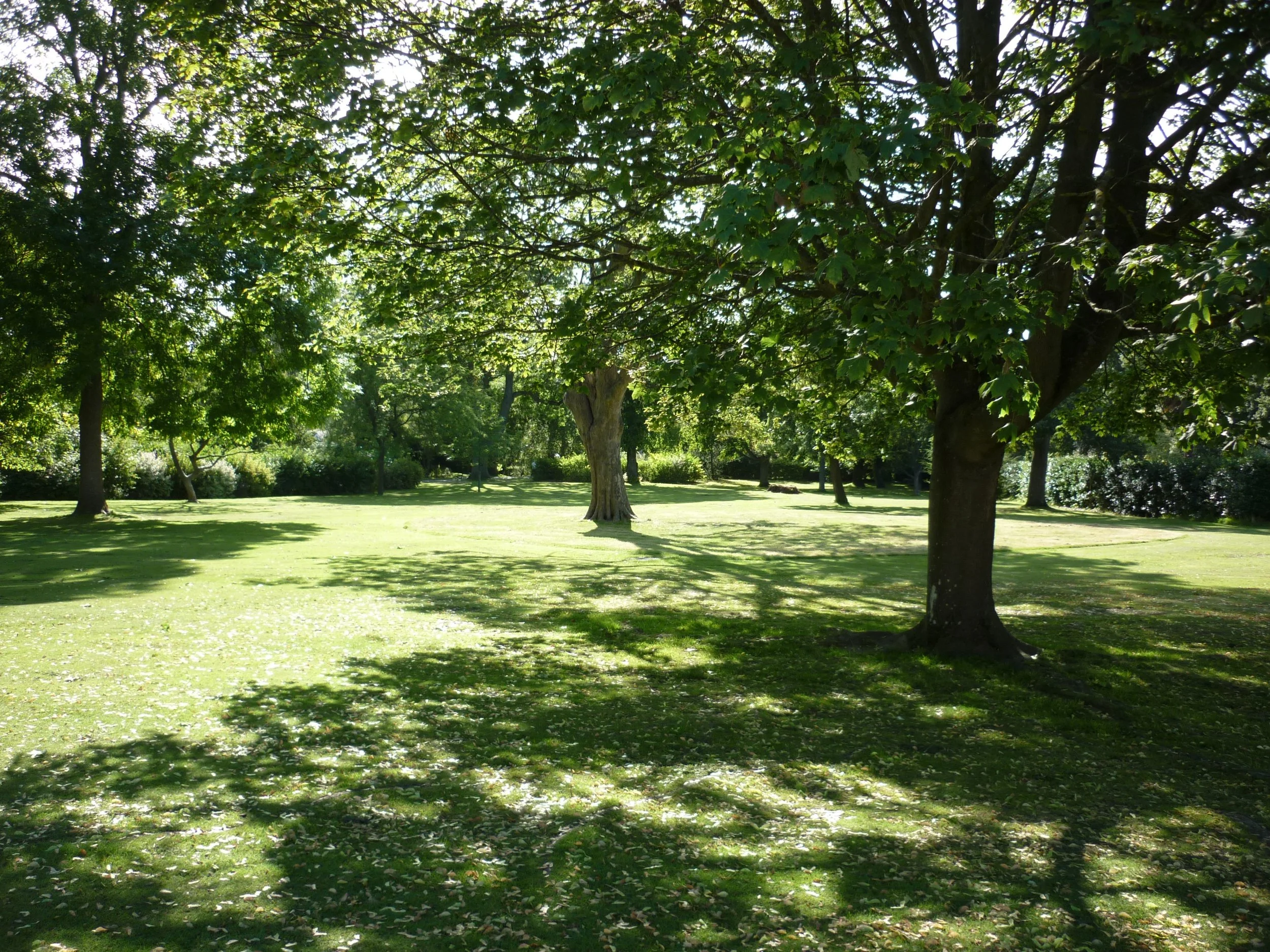The Lawns
The Main East and West lawns were the centre point of Marnock’s Gardenesque style, with the Broadwalk leading from north-west to south-east ending with the now reinstituted fountain.

The West Lawn
A magnificent 20 m Lucombe oak, Quercus x crenata ‘Lucombeana’ grows on the edge of the West Lawn. This is a hybrid between Q. cerris (Turkey Oak) and Q. suber (Cork Oak). Although this is reputed to be only semi-evergreen, our handsome specimen keeps its leaves throughout the winter.
Not far from the pavilions, Chinese dogwoods put on a long lasting, free-flowering display from May. The redwood, Sequoia sempervirens 'Cantab', originally planted a a ‘dwarf’ specimen, is now an imposing tree.
Near the Rose Garden there is a long-standing collection of maples. The Montpelier maple, Acer monspessulanum, near the fountain, was mentioned in the original plant catalogue by Robert Marnock in 1838. The nearby Paperbark maple, Acer griseum, is admired year-round. Rhododendron campanulatum flowers spectacularly most years.
The East Lawn, right hand side facing the Pavilion
The East Lawn is home to a diverse collection of deciduous trees, which being well spaced from each other exemplify the Gardenesque style of planting. The rare Corstorphine maple, Acer pseudoplatanus ‘Corstorphinense’, sits atop the mound opposite the main entrance and positioned so that its distinctive new yellow leaves can be admired from a distance in Spring.
Nearby is Magnolia acuminata or Cucumber tree, a large tree originating from North East United States of America. The flowers appear in May/June. Its popular name refers to the shape and colour of the fruit.
The lovely Ilex ‘Handsworth New Silver’, originally hybridised by Fisher, Son and Sibray at the once local Handsworth Nursery, has provided beautiful displays of berries in past years, but now unfortunately seems to be suffering from Holly Leaf Blight (2024)
Tilia tomentosa (Silver Lime) carried pendants of flower clusters which are a magnet for bees. Caucasian maples provide beautiful autumn colour. The Carpinus japonica (Japanese hornbeam) and the Fraxinus americana (American ash) are champion trees of the county. Nearby is a Morus nigra (Black Mulberry), a Juglans regia (Common Walnut) and a rare Phellodendron chinense, which is used in Chinese medicine.
Central Broadwalk, Mixed Borders
Along the Central Broadwalk between the East and West lawns, two substantial 80 m by 3 m herbaceous borders were developed in the 1930s by the Curator Charles Curtis. As part of the Restoration Project they were redesigned as mixed herbaceous/shrub borders, drawing on the ideas of Christopher Lloyd, with planting in pale, soft shades near the fountain, merging to stronger colours at the top end.
The holly hedge backing the borders is made up of a variety of hollies, some of which were propagated at the old Handsworth Nursery, by Fisher Son and Sibray.
Through the summer and autumn months, against the backdrop of the holly hedges, the scale of the planting creates a splendid display with eye-catching subjects such as Crambe cordifolia, Iris sibirica 'Dreaming Yellow', Campanula spp, Geranium 'Patricia' followed by Aster spp, and Chelone obliqua (Twisted shell flower).
A fine Ligustrum lucidum ‘Excelsum Suberbum’ (variegated Chinese privet) flowers beautifully in early autumn.
Miscanthus spp, Molinia spp and Hakonechloa macra 'Aureola' are among the graceful selection of grasses which give movement and continuity.
These, along with a pair of Chusan palms, a Trachycarpus fortunei, and a Trachycarpus wagnerianus, provide structure and interest through the winter.

















